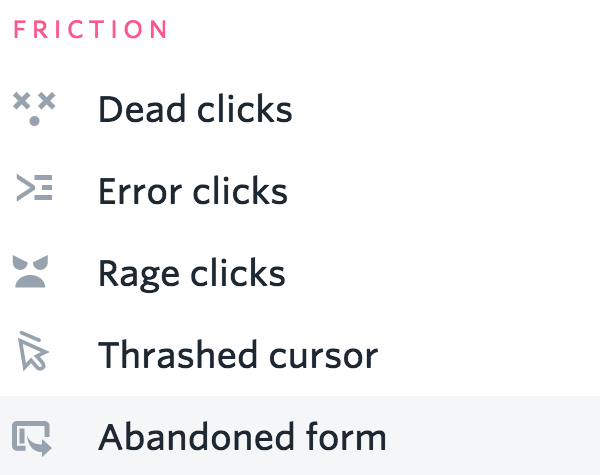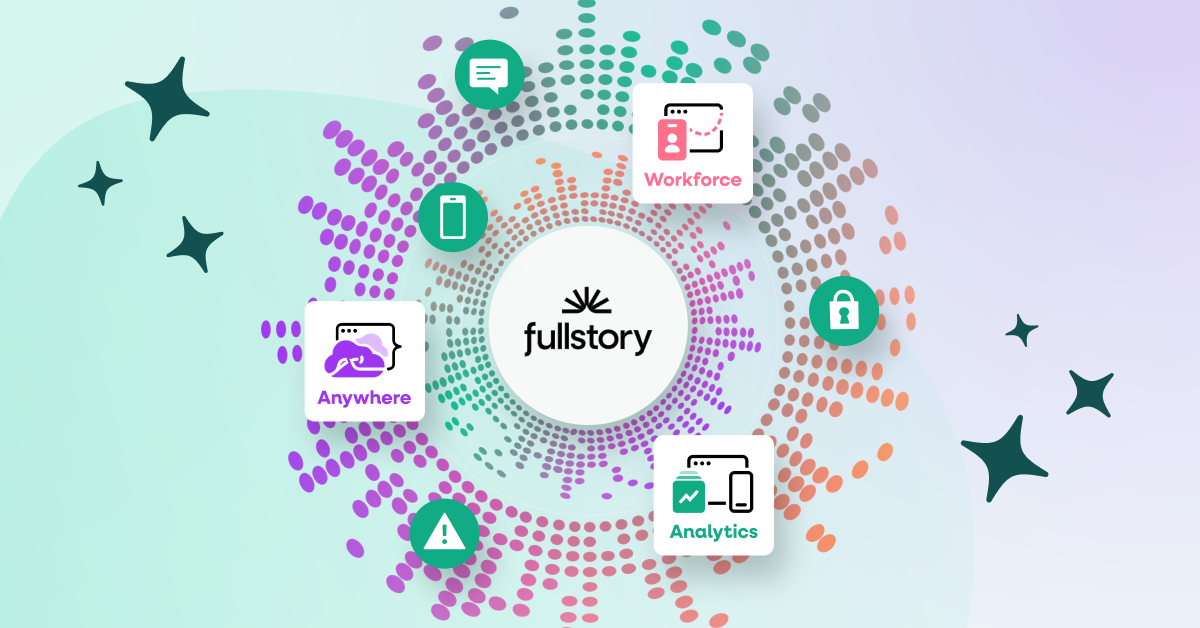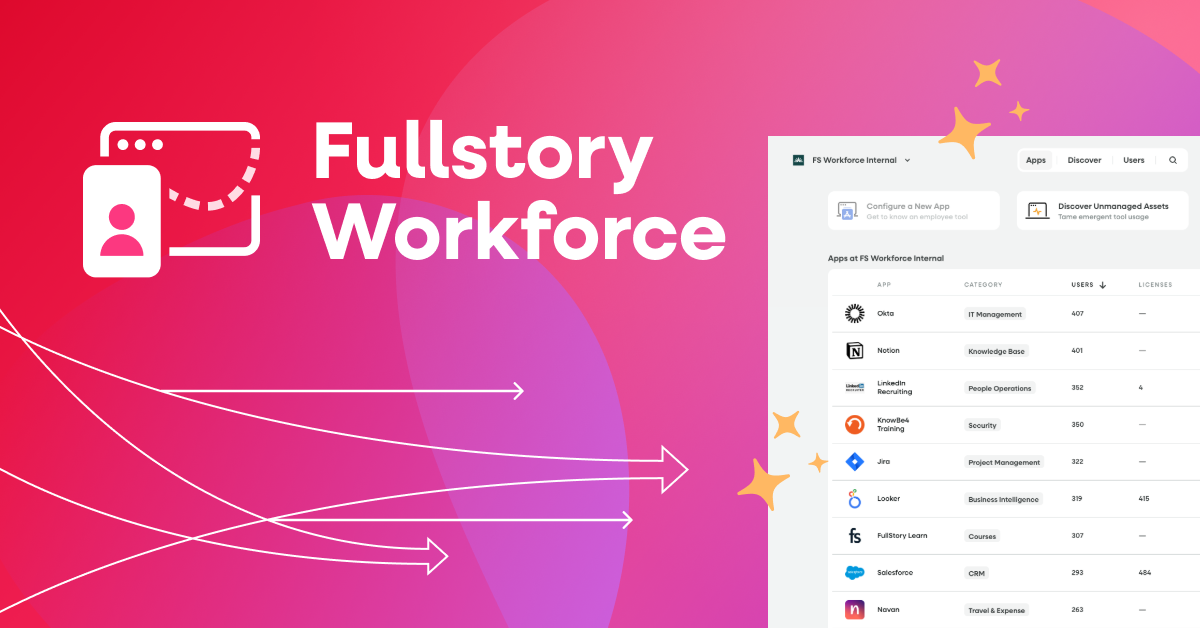In some way or another, most online businesses rely on form submissions for success. Whether for a checkout process, an email newsletter signup, or an interactive quiz, better form completion rates are better for business.
The problem is, form abandonment rates are notoriously high, especially when site errors come into play. In fact, nearly 70% of site visitors will abandon a form forever if they encounter an issue with it.
So, how can you combat form abandonment and increase conversions for your business?
In this article, we’ll cover what form abandonment is, why it’s important to address, and how you can decrease abandonment and boost conversions.
What is form abandonment?
The definition of form abandonment is when a user leaves an online form without completing it.
Any type of form is susceptible to abandonment—lead generation forms, email newsletters, checkout forms, contact forms, and others.
Form abandonment can have many causes: a bug in the form submission process, confusing user experience, or too many fields, to name a few.
Why is addressing form abandonment important?
For many businesses, form conversions are a key business-success metric. A form might be used to start a sales cycle (as with lead generation forms), or to close a sale (as with an ecommerce payment form).
Simply put, form abandonment can lead to lost sales, missed opportunities, and wasted time and money.

There’s plenty of data around how form abandonment can impact business outcomes. For example:
50% of marketers say that inbound marketing strategies such as online forms are their main source of leads
63% of companies say that traffic and lead generation are their main marketing challenge
50% of organizations say that online forms convert more leads compared to other tools
It’s clear from this data that forms are the go-to information collection method for website visitors, and thus need to be optimized for conversions and conversion funnels.
But first, we need to figure out the customers’ journeys on their way to any given form. For instance, a customer may search a keyword, land on your blog, click to view it, and end up filling out a form to get more information—voila!
Understanding a potential customer’s intent is key to increasing the rate at which they complete your forms.
Identify where and why your users are abandoning your forms
With Fullstory's Digital Experience Intelligence platform, you can quickly and easily identify where users are dropping off of your forms—so you can create the perfect form experience and boost conversion rates.
What drives users to abandon website forms?
There are many reasons why people abandon forms, with the most common being that they are too complicated or demand too much information.
Other reasons users might abandon a form:
The perceived value of submitting the form is not strong enough—you don’t get enough in return for completing it
Users are indecisive or don’t yet trust your brand
Users aren’t sure their information will be safe
Users are merely window shopping
Users think they’re being asked for information they shouldn’t have to provide
Consider this data when thinking about how to design your forms:
29% of people abandon online forms because of security concerns
27% of people abandon online forms because of the length of the form
11% of people abandon online forms because of advertisements or upselling
10% of people abandon online forms because the form is too long
How to measure form abandonment
Tracking form abandonment can help you understand how to improve your form conversion rates. And addressing this is imperative to grow a business.
Fortunately, there are product analytics platforms designed to help you do precisely that—understand your users’ intent and create a form perfectly suited to convert them into leads.
With these tools, you can monitor important information like:
How long it takes a visitor to fill out your form
Which specific form fields are causing issues
Where the abandonment took place
What users do after they complete your form
What users do after they abandon it
Which forms convert better than others
With a behavioral data platform like Fullstory, you can uncover why form abandonment is happening and improve the user experience.
How to reduce form abandonment
Reducing form abandonment starts with how you develop your forms. Often, this means carefully selecting what information you’re asking for and trying to minimize the number of fields.
When deciding what information to ask for, consider why you’re gathering the information, how you’ll use it, and whether or not there’s a better time to ask for that info.
Form best practices:
Form format optimization
Make form fields responsive and accessible—they need to have been thoroughly tested and function properly across all devices.
Remove unclear or confusing copy. Too many fields or unnecessary questions can distract or frustrate users, especially those on mobile devices.
Optimize load times. Check your image compression, link functionality and overall website speed—especially if you have multi-page forms.
Incentivize completion of the form.
Establish form security. Add an SSL certificate to your site for additional website safety as well as keeping your user’s information safe.
Encrypt your forms to ensure that submission data is transferred and stored in a secure format.
Stay compliant with GDPR and CCPA protection.
Clearly display your privacy policy. There should always be a link to your privacy policy to stay out of the legal weeds.
Install CTAs
Consider creating a customized exit-intent popup to capture information before a customer leaves your site.
Popups should be basic forms that only gather a few pieces of info, like a name or email address.
Offer the site visitor an incentive, like a discount or a piece of gated content.
Customize your form button. Do some research on the form button templates that really convert.
A/B test your form
A/B test to compare designs, formats, and layouts to find the best one. Be sure to change only one feature at a time to get real results.
Test your form with Google Optimize. Optimize is integrated with Google Analytics, so you can quickly understand how your form can be improved.
Test your form with your team internally. It’s always best practice to run it by your team, first.
Have a form builder or a plugin for your form? These best practices still apply!
User Friction 101: Everything You Need to Know
Read all about the basics of user friction — and how to solve your UX problems. Read more about user friction.
How Fullstory helps you resolve form abandonment issues
Fullstory's behavioral data lets you identify and see form abandonments in action, giving you insights into how users are really engaging with forms.
With session replay, you can see which fields are driving the most abandonments and identify trends in what users are doing before, during, and after their form abandonments.
While abandonment may never be completely eliminated, researching its causes through DXI is a step toward reducing friction. This will result in users completing your forms at higher rates.
Find form abandoners in Fullstory the same way as other frustration signals, like rage clicks, errors clicks, or dead clicks:
Log in to Fullstory and head to the OmniSearch bar, start typing “form abandonment” and it will auto-complete with “Abandoned any form.”
From there, your search results will be filtered.
Refine your form abandonment search by adding other parameters.



